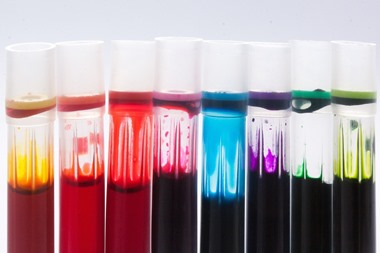Can we help you?
Contact us

Can we help you?
Contact us

Thank you for contacting us
Your form has been submitted successfully Our team will contact you again as soon as possible.
Whooppss...!! An error has occurred
Try sending later or write an email directly to areaempresas@ua.es

 PATENTED TECHNOLOGY
PATENTED TECHNOLOGY
INFO
SHEET
DOWNLOAD
EXECUTIVE
ABSTRACT
CONTACT DETAILS: Research Results Transfer Office-OTRI
University of Alicante
Tel.: +34 96 590 99 59
Email: areaempresas@ua.es
http://innoua.ua.es
These nanopigments requires a low energy input for its production, the raw materials are easily available, they are non-toxic, and presents an outstanding resistance to heat, ultraviolet radiation, oxygen and other environmental agents, when compared with other organic coloring alternatives. These pigments produce a wide range of colors that can be precisely tuned and are more intense than the currently used. The research group is looking for companies interested in acquiring this technology for its commercial exploitation.

A hybrid pigment is a controlled mixture between an inorganic host and an organic guest.
The inorganic material could be chosen from different types of clays with unique morphological and size distribution features, depending on the mechanical, optical or barrier properties for the intended application. As organic material, the component that is responsible to impart colour, a rich spectrum of natural or synthetic dyes can be used, besides, it is possible to use functional dyes to achieve thermochromic, electrochromic, luminescence and other special features.
The research group has developed a new method to produce nanostructured hybrid pigments with specific optical and colloidal properties according to the synthesis parameters. This method comprises two steps:
1) Dispersion of, at least, one inorganic material;
2) Addition of, at least, one organic dye.
The following parameters might be changed in order to obtain different kinds of nanopigments:
• Inorganic material concentration
• Organic dye concentration
• pH
• Temperature
• Ionic strength
The optical response of nanopigments changes according to the particle size distribution and structure of the inorganic material (or materials) dispersion.
This method makes it possible to produce new hybrid nanopigments with optical and colloidal properties for different applications.
The main advantages are:
• The synthesis process is not complex and it can be easily scaled to industrial production.
• The production method usually works at room temperature (below 200ºC).
• The nanopigments produced by this method does not require a high energy input.
• The raw materials are inexpensive and easily available in the market.
• The nanopigments are heavy-metals free, unlike conventional pigments.
• These nanopigments are non-toxic and environmental friendly.
• These nanopigments provide a wide range of intense colors which are stable to heat, ultraviolet radiation, oxygen and other environmental agents.
• These nanopigments provide a homogeneous coloration to the substrate.



Picture: nanostructured hybrid pigments synthesized in the laboratory
Hybrid nanopigments can be presented as a powder or dispersed in a polar or non-polar liquid solvents for application in several industrial sectors, such as:
The research group is looking for companies interested in acquiring this technology for its commercial exploitation.
• Type of partner sought: private companies.
• Specific area of activity of the partner: production and/or commercialization of pigments for several industrial sector applications.
• Task to be performed: acquire technology for its commercial exploitation. The research group is also open to other kind of collaboration (for example: R&D new applications of this technology in other fields).
This technology is protected by patent application:
• Application number: P201200078
• Application date: 27th January 2012
Footwear and Textile
Pharmacology, Cosmetics and Ophthalmology
Toys
Wood and Furniture
Materials and Nanotechnology
Stone and Marble
Chemical Technology
Carretera San Vicente del Raspeig s/n - 03690 San Vicente del Raspeig - Alicante
Tel.: (+34) 965 90 9959




